| Umělec 2011/1 >> Teflon Project or A Tour to the Rudolfinum (howl was showing the Rudolfinum) | Просмотр всех номеров | ||||||||||||
|
|||||||||||||
Teflon Project or A Tour to the Rudolfinum (howl was showing the Rudolfinum)Umělec 2011/101.01.2011 Alena Boika | grant theft auto | en cs de |
|||||||||||||
|
Once on a Saturday afternoon, when the clock hands were approaching five and, feeling satisfied with what I had managed to do, I was about to leave Karlin Studios, which houses the publishers Divus and the Umelec editorial team, when the doorbell suddenly rang. We have quite a peculiar doorbell, and realizing that in order to open the door I needed to go all the way downstairs, I was ready to ignore it since there was no exhibition open for visitors in the Karlin Studios at that moment; yet I decided to come down and see who this could be, ringing so insistently.
When I opened the door, I found a small group of young people, joyfully and embarrassedly hanging about at the entry. They did not look Czech and spoke English, showing me the Art Map, which had led them to Karlin Studios. I explained to them that it was the interim period between exhibitions—therefore there was nothing to look at—but suggested making a short tour across our ‘luxurious’ post-industrial space anyway, which looks absolutely amazing, but is totally unfit for working and living, it being a concrete and glass construction, it is all light and air, but it is unbearably cold in winter and, naturally, too hot in summer. They clicked their tongues in admiration, thoroughly examined everything, bought the magazines and books and told me that they had arrived in Prague, “within the residences programme,” and were leaving the next day, having not really seen anything, because they had been working on the project all the time. Feeling sympathy and compassion towards these artists, I offered to show them some places in the city before closing time. So we visited Trafacka and the Meet Factory. While we were moving from one place to another, they told me some pieces of their story, which would not fully integrate in my head. And only after visiting the Meet Factory, when they invited me, “to their place,” for dinner with champagne, the whole story finally acquired all its enchanting completeness. It turned out that the artists had come from Scotland (Edinburgh) on the invitation of a Czech curator, whose name they embarrassedly refused to tell me, reasoning that, “something could have happened to him.” Well, yes, something had happened, since the man, having invited them all to Prague, had never shown up. What would the normal Czech or Russian, artist do in this situation? Well, it is clear; they would take a walk about Prague and, most probably, go home. But these artists were not, in that sense normal. That is why they decided to rent one large apartment for all of them—4 people, and implement the project they had been preparing for six months, on their own. So who are these strange, beautiful people? Darren Farquhar and Petra Pennington, the young artists actively pursuing the way of life of the professional contemporary artists, who came to Prague straight from Australia, where they had stayed within another residence programme. Mirja Koponen, who was born in Finland, studied in St. Petersburg and Kansas, and after several years of an active researcher and performer’s life in America, moved to Edinburgh, where she carries on—not any less enthusiastically, but more carefully analyzing all the angles of the physical and metaphysical space. Sara Sinclair, who was trying to persuade me that she is simply a mother of two kids and a housewife, using the funny costumes which looked like the “Make your home cozy!” features in the magazines of the 1970’s as an argument and making, “kitchen performances.” But, being intrigued by the small house hidden in the grass on her business card, I took the trouble to find out that Sara Sinclair initiated and organized the Back Garden Biennale which had already taken place in her garden three times since 2006 (2008, 2010)1. They met that man, who later organized all these things in Prague for them, almost by accident. He traveled all the way to Scotland to meet them, where they gave him a magnificent reception with gifts and excursions. However, even at that time they already felt a little confused by the oddities that slipped out in his speeches: the man mentioned some sociological studies, a European grant, target groups and in general was using concepts and terms that lay somewhat far beyond the sphere of art. But they remembered this only in Prague, having found themselves on the, “virgin soils,” (wilderness) and realizing that they would have to determine their own target groups, as well as all the rest of it, themselves. Well, so said, so done. The main part of the plan was to hold an exhibition in Neratovice (which is an industrial satellite town near Prague). And in between times, so as not to lose the time in vain, they decided to hold a series of street performances, organize a Home Museum for visitor excursions (with tours given) and document every possible detail of the project. The only difficulty was that they knew nobody, neither in Prague, nor in the whole Czech Republic. This handicap however did not prevent them from getting to Neratovice, coming to the local school—where else could they go?–and organizing an exhibition there. I can imagine the amazement of the local people. No communication possible, very foreign ever smiling artists and... the art. It should be mentioned that the inventive curator had informed them that Neratovice was exactly the place where their, “target audience,” lived, and therefore they had to, “work on this.” And they worked. Sara Sinclair—a mother and housewife—studied all the available literature on the subject and all together they created a project related to the ‘historical memory’ and other heavy legacies of the socialist past in one province. It looked really nice, touching and easy, without any forced conceptual refinements. Petra Pennington, who turned out to have Czech roots, even learned some Czech on this occasion, trying to explain to the natives that they were neither aliens, nor time travelers, but simply foreign artists on the art mission. In short, almost no one came to the vernissage, and they were feeling a little upset because they failed to figure out whom and how they could have invited the local populace. Having carefully collected all the unclaimed exhibits and returned to Prague with them but still not giving up on the hope of making contacts with the local intellectual community, they began organizing the Home Museum. Everything was precisely thought out, the objects were properly arranged, Mirja Koponen transformed into a guide, and Sara Sinclair, in line with the image of a housewife, settled to the performance at the kitchen table. They opened the doors of their huge apartment for everyone willing to come—and guess what was next? Tell me, do you know many Czechs who still live on the Revoluční Street? Well, they did not come across them either; their embarrassed communication attempts revealed that there were primarily offices all around, inhabited by various foreigners, practically the same as they were themselves. But they did not give way to despair, panic or tears. Their lives had already transformed into a continuous happening. Mirja conducted excursions for her colleagues who nearly died, choking with laughter, though the video looks deadly serious and quite persuasive. And in between times they arranged performances at the Old Town Square (Staroměstské náměstí) and around, wherever they were able to, still hoping for a miracle—to be discovered by some hypothetical local art environment, the information about which they received only via the Internet. You could ask, “Why did they not go to some normal art center or gallery?” But why should they? They were already engaged in art. And they wanted an art center or a gallery to come to them. ... It was a surprising dinner. After all the stories and the excursion, which they arranged especially for me, Mirja started singing from, “sheet music,” determined by the silhouettes of Prague. We were sitting on the spacious balcony, or rather the terrace, from which Prague was seen in all its glory, with a panoramic view through 180 degrees, and even wider if one bent over the balustrade. So Mirja was singing, following the spikes and lowering or raising her voice, depending on the height of the next tower. It was amazing! We parted in the dead of the night, after all the champagne had been drunk and a lot of things had been discussed. But it was not the end of the story. The next day, before their departure, I insisted that we still had to meet for an hour or so, because I definitely needed to show them something that was extremely necessary for them, something which they could not leave without seeing. The sun was shining brightly, it was a magnificent day; we came to a grand building and I said, “Look, this is Rudolfinum.” We entered and they were keeping silent and looking around, stunned and bewildered; their supervisor, beside the target group in Neratovice, had managed to tell them in between times that their exhibition would be held in the prestigious kunsthalle Rudolfinum, one of the most important neo-renaissance buildings in Prague. Curtain down. P.S. At Mirja’s insistence, I title this affair as The Teflon Project—the term they got used to during this adventure. “No matter how hard we tried, what efforts we made, everything would ‘roll down’ into nowhere, as on a Teflon frying pan,” she laughed. I have a dream: to invite them again and to arrange a large-scale version of their Museum with excursions and performances in the same apartment on Revoluční street, where Mirja was singing, “from the sheet music of Prague,” so as to give them a chance to believe that, apart from the Rudolfinum, we have a reasonable art community here, ready for contacts. (I hope, maybe it’s even possible to manage without a European grant). 1 www.back-garden-biennale.co.uk Translated from Russian by Elena Dyuldina. You can read another version of the story written by one of its protagonistis - Mirja Koponen A short ANATOMY OF a "COLLABORATION" when one eye looks left, and the other one towards the upper right hand corner
01.01.2011
Рекомендуемые статьи
|
|||||||||||||
|
04.02.2020 10:17
Letošní 50. ročník Art Basel přilákal celkem 93 000 návštěvníků a sběratelů z 80 zemí světa. 290 prémiových galerií představilo umělecká díla od počátku 20. století až po současnost. Hlavní sektor přehlídky, tradičně v prvním patře výstavního prostoru, představil 232 předních galerií z celého světa nabízející umění nejvyšší kvality. Veletrh ukázal vzestupný trend prodeje prostřednictvím galerií jak soukromým sbírkám, tak i institucím. Kromě hlavního veletrhu stály za návštěvu i ty přidružené: Volta, Liste a Photo Basel, k tomu doprovodné programy a výstavy v místních institucích, které kvalitou daleko přesahují hranice města tj. Kunsthalle Basel, Kunstmuseum, Tinguely muzeum nebo Fondation Beyeler.
|








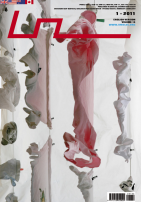










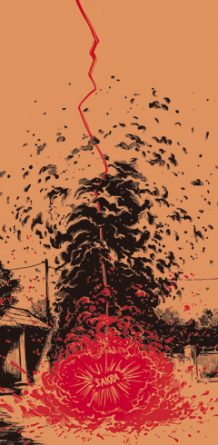






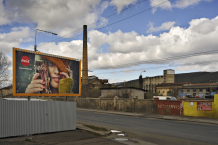




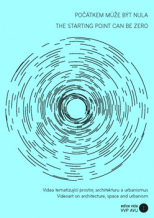

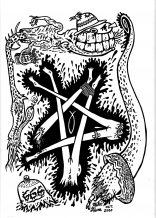
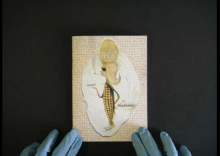


 New book by I.M.Jirous in English at our online bookshop.
New book by I.M.Jirous in English at our online bookshop.
Комментарии
Статья не была прокомментированаДобавить новый комментарий